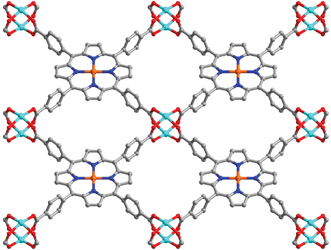This month sees the following articles in Dalton Transactions that are in the top ten most accessed:-
Applications of luminescent inorganic and organometallic transition metal complexes as biomolecular and cellular probes
Kenneth Kam-Wing Lo , Alex Wing-Tat Choi and Wendell Ho-Tin Law
Dalton Trans., 2012, Advance Article DOI: 10.1039/C2DT11892K
New trends in polyoxometalate photoredox chemistry: From photosensitisation to water oxidation catalysis
Carsten Streb
Dalton Trans., 2012, 41, 1651-1659 DOI: 10.1039/C1DT11220A
Luminescent bis-tridentate ruthenium(ii) and osmium(ii) complexes based on terpyridyl-imidazole ligand: synthesis, structural characterization, photophysical, electrochemical, and solvent dependence studies
Chanchal Bhaumik , Shyamal Das , Dinesh Maity and Sujoy Baitalik
Dalton Trans., 2012, 41, 2427-2438 DOI: 10.1039/C1DT11645B
New class of Preyssler-lanthanide complexes with modified and extended structures tuned by the lanthanide contraction effect
Chao Qin , Xue-Zhi Song , Sheng-Qun Su , Song Dang , Jing Feng , Shu-Yan Song , Zhao-Min Hao and Hong-Jie Zhang
Dalton Trans., 2012, 41, 2399-2407 DOI: 10.1039/C1DT11448D
2,2′:6′,2”-Terpyridine substituted in the 4′-position by the solubilizing and sterically demanding tert-butyl group: a surprisingly new ligand
Edwin C. Constable , Nik Hostettler , Catherine E. Housecroft , Peter Kopecky , Markus Neuburger and Jennifer A. Zampese
Dalton Trans., 2012, 41, 2890-2897 DOI: 10.1039/C2DT12142E
Auxiliary ligand-directed structural variation from 2D?3D polythreaded net to 3-fold interpenetrating 3D pillar-layered framework: Syntheses, crystal structures and magnetic properties
Jun Zhao , Dong-Sheng Li , Xi-Jun Ke , Bin Liu , Kun Zou and Huai-Ming Hu
Dalton Trans., 2012, 41, 2560-2563 DOI: 10.1039/C2DT12170K
Iron(ii) complexes of new hexadentate 1,1,1-tris-(iminomethyl)ethane podands, and their 7-methyl-1,3,5-triazaadamantane rearrangement products
Sara A. Diener , Amedeo Santoro , Colin A. Kilner , Jonathan J. Loughrey and Malcolm A. Halcrow
Dalton Trans., 2012, Advance Article DOI: 10.1039/C2DT11911K
Recent advances on the chemistry of transition metal complexes of 2-(arylazo)pyridines and its arylamino derivatives
Subhas Samanta , Pradip Ghosh and Sreebrata Goswami
Dalton Trans., 2012, 41, 2213-2226 DOI: 10.1039/C2DT10986G
Entangled coordination polymers with mixed N- and O-donor organic linkers: A case of module-matching priority
Li-Wei Han , Yun Gong , Zu-Jin Lin , Jian Lü and Rong Cao
Dalton Trans., 2012, Advance Article DOI: 10.1039/C2DT11899H
Water oxidation catalysed by manganese compounds: from complexes to ?biomimetic rocks?
Mathias Wiechen , Hans-Martin Berends and Philipp Kurz
Dalton Trans., 2012, 41, 21-31 DOI: 10.1039/C1DT11537E
Why not take a look at the articles today and blog your thoughts and comments below.
Fancy submitting an article to Dalton Transactions? Then why not submit to us today or alternatively email us your suggestions.











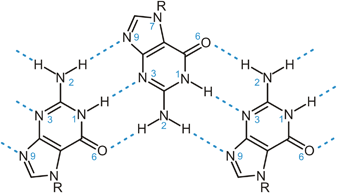
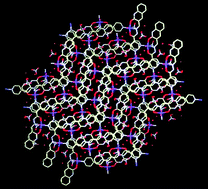

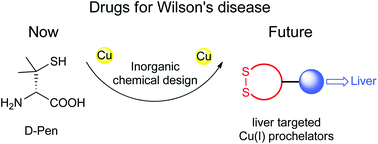
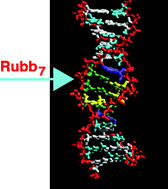
 The presence of C–F bonds in organic compounds has a dramatic influence on their physical, chemical and biological properties. Metal mediated reactions that result in C–F bond formation or C–F bond activation have attracted considerable attention as the demand for organofluorine compounds has increased. Metal-catalysed decarboxylative cross-coupling reactions using trifluoracetate as a cheap source of introducing “CF3” represents an attractive approach. Until now, little has been known about the fragmentation mechanisms of metal trifluoracetates. In this Dalton Transactions HOT article, Rijs and O’Hair use a combination of gas-phase 3D quadrupole ion trap mass spectrometry experiments and density functional theory (DFT) calculations to examine the mechanism of thermal decomposition of fluorinated coinage metal carboxylates. Synthetic chemists should be able to use these results to design new ways of incorporating CF3 and F fragments using trifluoroacetate.
The presence of C–F bonds in organic compounds has a dramatic influence on their physical, chemical and biological properties. Metal mediated reactions that result in C–F bond formation or C–F bond activation have attracted considerable attention as the demand for organofluorine compounds has increased. Metal-catalysed decarboxylative cross-coupling reactions using trifluoracetate as a cheap source of introducing “CF3” represents an attractive approach. Until now, little has been known about the fragmentation mechanisms of metal trifluoracetates. In this Dalton Transactions HOT article, Rijs and O’Hair use a combination of gas-phase 3D quadrupole ion trap mass spectrometry experiments and density functional theory (DFT) calculations to examine the mechanism of thermal decomposition of fluorinated coinage metal carboxylates. Synthetic chemists should be able to use these results to design new ways of incorporating CF3 and F fragments using trifluoroacetate.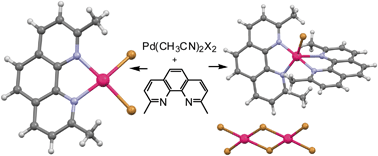
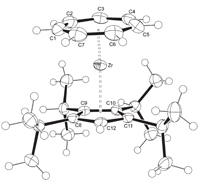 Ferrocene
Ferrocene